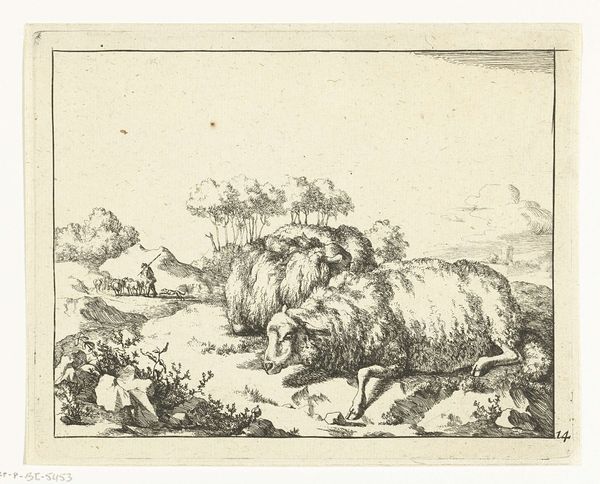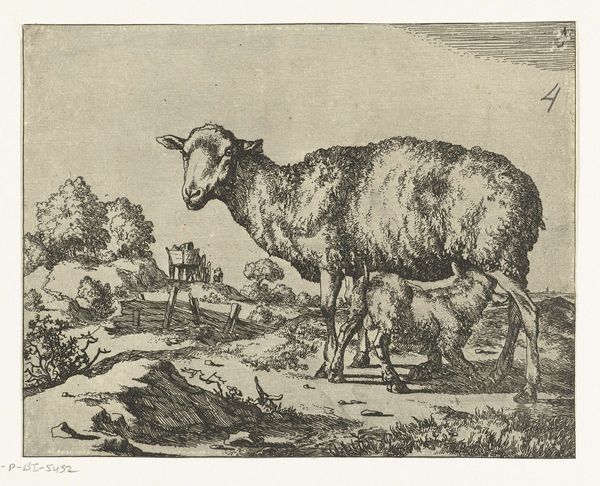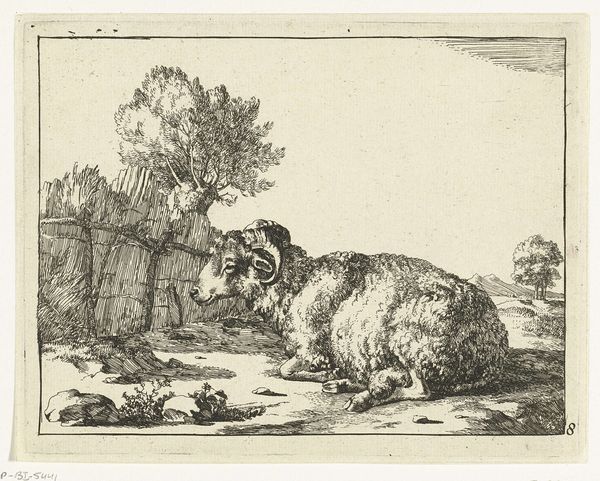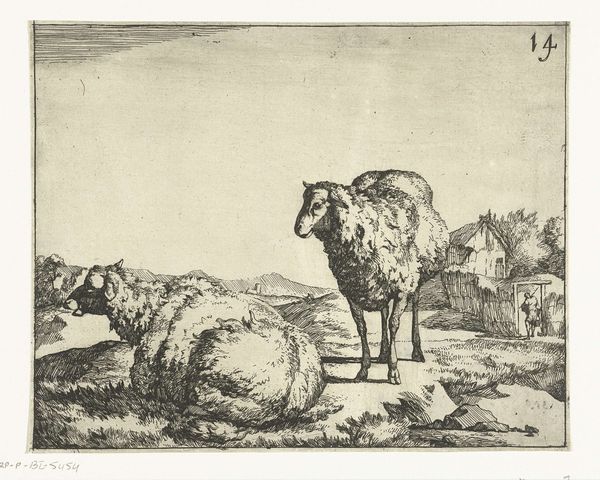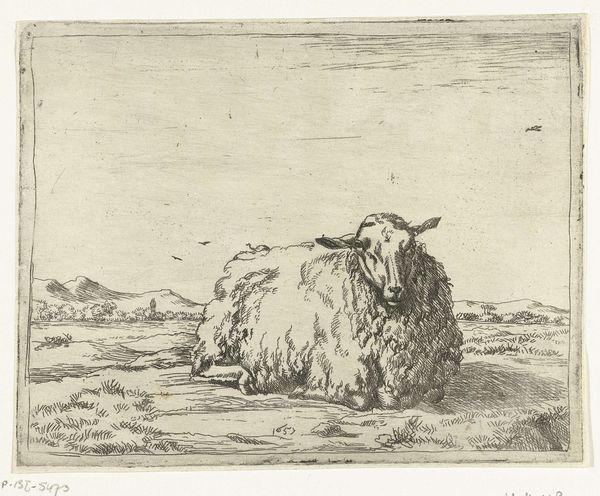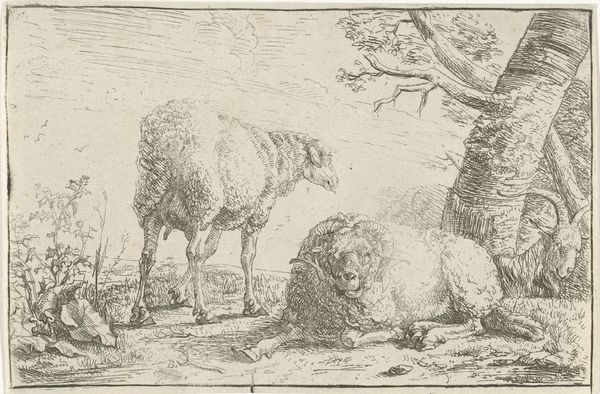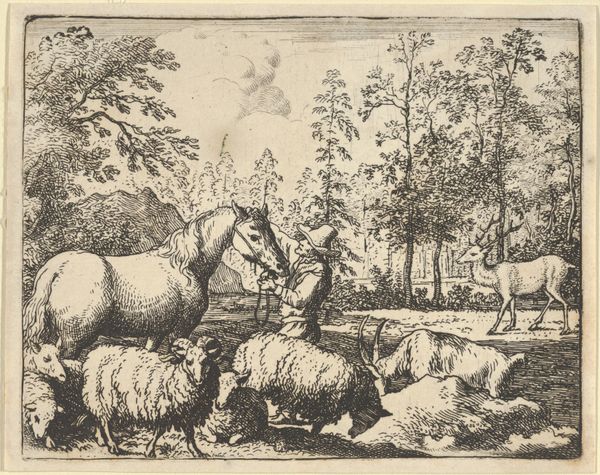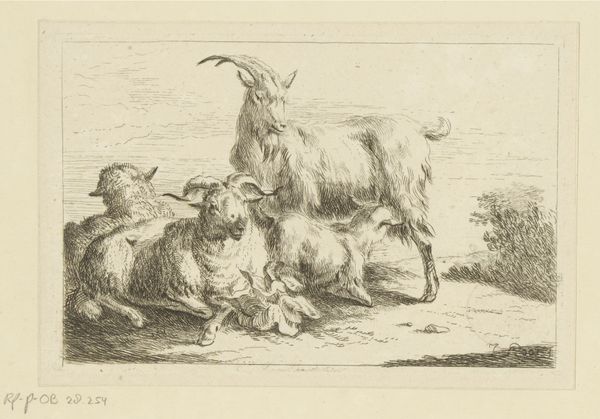
drawing, print, etching, engraving
#
drawing
#
animal
#
dutch-golden-age
# print
#
etching
#
old engraving style
#
landscape
#
engraving
#
realism
Dimensions: height 117 mm, width 146 mm
Copyright: Rijks Museum: Open Domain
Editor: This is Marcus de Bye’s "Liggend schaap, hekje op voorgrond," or "Reclining Sheep, Fence in the Foreground," from 1664. It's an etching or engraving, and there's a lovely stillness to it. What symbols or deeper meanings do you see in such a pastoral scene? Curator: That stillness is key. Consider the sheep, a loaded symbol across cultures. What does it evoke for you? Editor: Meekness? Vulnerability? A connection to nature? Curator: Precisely. And vulnerability is key, especially within the context of the 17th century, where landscape often mirrored the social and political climate. The sheep here is also domesticated, held in by that small fence... Editor: A sense of being protected, but also confined? Curator: It raises questions of freedom versus safety, the natural versus the cultivated. The Dutch Golden Age was a period of immense prosperity, but also complex social structures. De Bye is perhaps subtly suggesting the tension within that stability. The animal looks directly at us – are we the viewer, or also the shepherd? Editor: I see now. It’s not just a pretty picture of a sheep; it's a reflection on the human relationship to nature and society. It’s about order and freedom. Curator: And remember the cloudscape, barely drawn. What are your impressions of its emotional and historical implications? We see the heavy burden of history weighing even on landscape! Editor: I'll remember to dig beneath the surface with pastoral scenes in the future, looking at all the embedded symbolism. Thanks. Curator: Indeed. Landscapes hold so much cultural memory if we look closely enough.
Comments
No comments
Be the first to comment and join the conversation on the ultimate creative platform.
